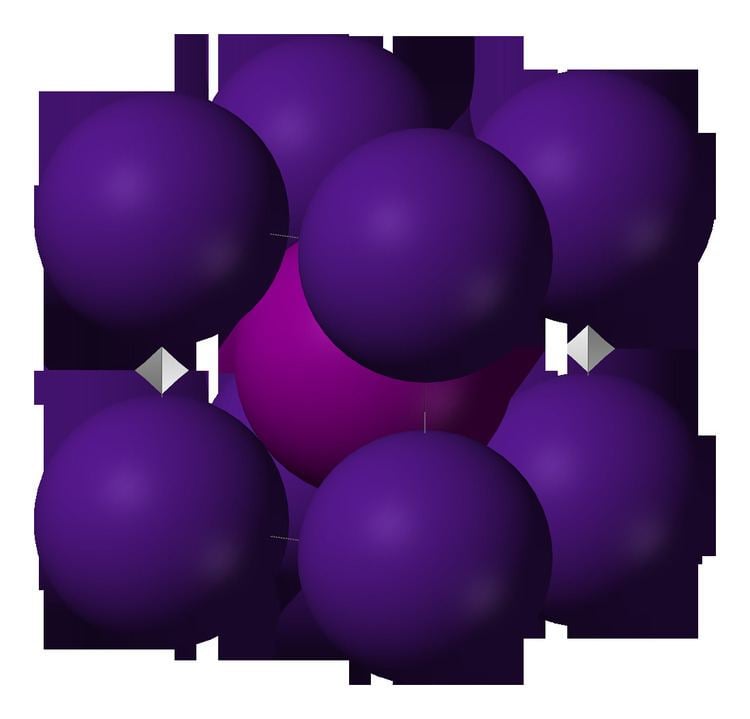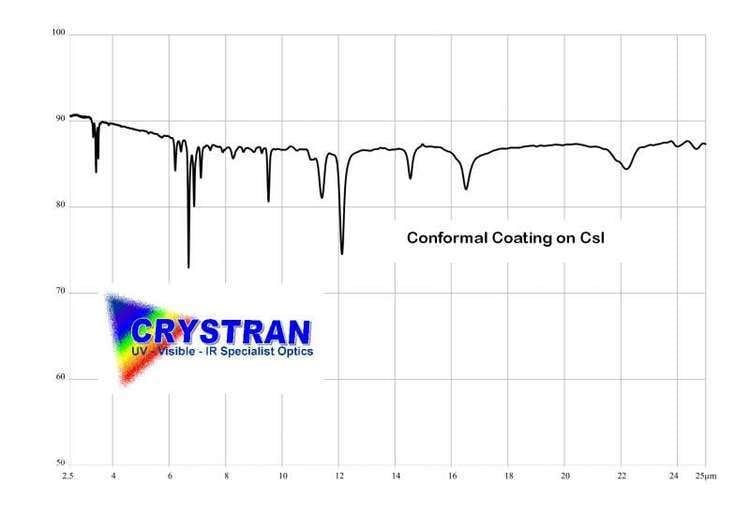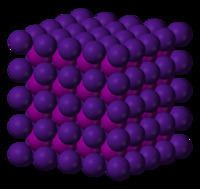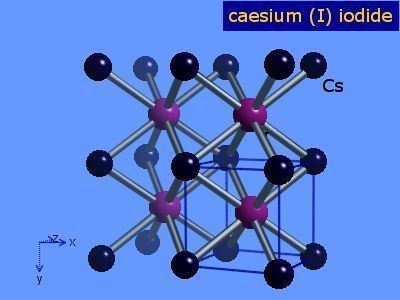Formula CsI Molar mass 259.81 g/mol Boiling point 1,280 °C Appearance white crystalline solid | Melting point 621 °C Density 4.51 g/cm³ | |
 | ||
Caesium iodide (chemical formula CsI) is the ionic compound of caesium and iodine. It is often used as the input phosphor of an x-ray image intensifier tube found in fluoroscopy equipment. Caesium iodide photocathodes are highly efficient at extreme ultraviolet wavelengths.

An important application of caesium iodide crystals, which are scintillators, is electromagnetic calorimetry in experimental particle physics. Pure CsI is a fast and dense scintillating material with relatively high light yield. It shows two main emission components: one in the near ultraviolet region at the wavelength of 310 nm and one at 460 nm. The drawbacks of CsI are a high temperature gradient and a slight hygroscopicity.

Caesium iodide is used as a beamsplitter in Fourier transform infrared (FTIR) spectrometers. It has a wider transmission range than the more common potassium bromide beamsplitters, extending its working range into the far infrared. However, optical-quality CsI crystals are very soft and a hard to cleave or polish. They should also be coated (typically with germanium) and stored in a desiccator, to minimize interaction with atmospheric water vapors.

Caesium iodide atomic chains can be grown inside double-wall carbon nanotubes. Accurate measurements reveal that in such chains I atoms appear brighter than Cs atoms despite having a smaller mass. This difference was explained by the charge difference between Cs atoms (positive), inner nanotube walls (negative) and I atoms (negative). As a result, Cs atoms are attracted to the walls and vibrate more strongly than I atoms, which are pushed toward the nanotube axis.


